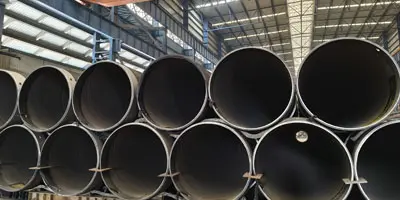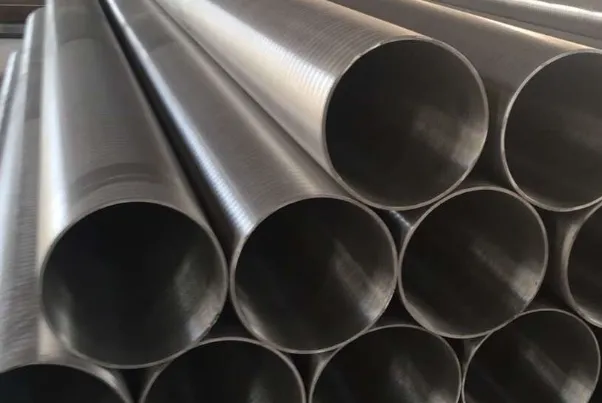Stainless steel welding rods can be divided into chromium stainless steel welding rods and chromium-nickel stainless steel welding rods. All the welding rods that meet the national standard of these two types shall be assessed according to the provisions of the national standard GB/T 983-2012. Chromium stainless steel has certain corrosion resistance (oxidizing acid, organic acid, cavitation), heat resistance and corrosion resistance. It is usually selected as equipment materials for power stations, chemical industry, petroleum, etc. However, chromium stainless steel generally has poor weldability, and attention should be paid to welding process, heat treatment conditions and selection of suitable welding rods. Chromium-nickel stainless steel welding rods have good corrosion resistance and oxidation resistance, and are widely used in chemical industry, fertilizer, petroleum, and medical machinery manufacturing. In order to prevent intergranular corrosion caused by heating, the welding current should not be too large, about 20% less than that of carbon steel welding rods, the arc should not be too long, the interlayer should be cooled quickly, and a narrow weld is preferred.
Stainless steel welding plays a crucial role in various industries, especially when working with 304 stainless steel and 316 stainless steel. Welding rods for stainless steel are generally classified into chromium stainless steel rods and chromium-nickel stainless steel rods, and both are evaluated according to the national standard GB/T 983-2012.
Key points and precautions for stainless steel welding
Use a power supply with vertical external characteristics, and use positive polarity when direct current (welding wire connected to negative electrode)
1. Generally suitable for welding thin plates below 6mm, with beautiful weld formation and small welding deformation.
2. The shielding gas is argon with a purity of 99.99%. When the welding current is 50~150A, the argon flow rate is 8~10L/min, and when the current is 150~250A, the argon flow rate is 12~15L/min.
3. The length of the tungsten electrode protruding from the gas nozzle is preferably 4~5mm, 2~3mm in places with poor shielding such as corner welding, 5~6mm in places with deep grooves, and the distance from the nozzle to the workpiece generally does not exceed 15mm.
4. To prevent the appearance of welding pores, the welding parts must be cleaned if there is rust, oil, etc.
5. The arc length is preferably 2~4mm when welding ordinary steel, and 1~3mm when welding stainless steel. If it is too long, the protection effect will be poor.
6. When butt-bonding, in order to prevent the back of the bottom weld from being oxidized, the back also needs to be protected by gas.
7. In order to make the argon gas protect the welding pool well and facilitate the welding operation, the center line of the tungsten electrode and the workpiece at the welding point should generally maintain an angle of 80~85°, and the angle between the filler wire and the workpiece surface should be as small as possible, generally about 10°.
8. Wind protection and ventilation. In windy places, please take measures to block the net, and take appropriate ventilation measures indoors.
Key points and precautions for stainless steel MIG welding
1. Use a flat characteristic welding power source, and use reverse polarity when using DC (welding wire connected to the positive electrode)
2. Generally use pure argon (purity is 99.99%) or Ar+2%O2, and the flow rate is preferably 20~25L/min.
3. Arc length. MIG welding of stainless steel is generally performed under the condition of spray transition, and the voltage should be adjusted to an arc length of 4~6mm.
4. Wind protection. MIG welding is easily affected by wind, and sometimes a breeze will produce pores, so wind protection measures should be taken in places where the wind speed is above 0.5m/sec.
Key points and precautions for welding stainless steel flux-cored wire
1. Use a flat characteristic welding power source, and use reverse polarity for DC welding. You can use a general CO2 welding machine for welding, but please loosen the pressure of the wire feed wheel slightly.
2. The shielding gas is generally carbon dioxide gas, and the gas flow rate is more suitable at 20~25L/min.
3. The distance between the welding nozzle and the workpiece is preferably 15~25mm.
4. The dry extension length is generally about 15mm when the welding current is below 250A, and about 20~25mm when it is above 250A. Stainless steel electrodes can be divided into chromium stainless steel electrodes and chromium-nickel stainless steel electrodes. All of these two types of electrodes that meet the national standard are assessed according to the provisions of the national standard GB/T 983-2012. Chromium stainless steel has certain corrosion resistance (oxidizing acid, organic acid, cavitation), heat resistance and corrosion resistance. It is usually selected as equipment materials for power stations, chemical industry, petroleum, etc. However, chromium stainless steel generally has poor weldability, and attention should be paid to welding process, heat treatment conditions and selection of appropriate welding rods. Chromium-nickel stainless steel welding rods have good corrosion resistance and oxidation resistance and are widely used in chemical, fertilizer, petroleum, and medical machinery manufacturing. In order to prevent intergranular corrosion due to heating, the welding current should not be too large, about 20% less than that of carbon steel welding rods, the arc should not be too long, the interlayer cooling should be fast, and a narrow weld is preferred.
Applications of 304 and 316 Stainless Steel in Welding
304 Stainless Steel:
The most widely used stainless steel, offering excellent formability and corrosion resistance. Common in kitchen equipment, tanks, and pipelines.
Known for higher corrosion resistance, especially against chlorides and marine environments. Preferred in chemical processing, marine applications, and medical devices.
Both require precise control of heat input, cooling rate, and welding techniques to maintain corrosion resistance and mechanical strength.
Conclusion
Stainless steel welding is not only a process of connecting materials, but also related to the long-term service performance and safety of the structure. Selecting appropriate welding materials, optimizing welding processes and strict on-site operation specifications are the three cornerstones to ensure welding quality. With the continuous upgrading of industrial manufacturing, enterprises should increase investment in welding technology and use high-quality welding processes to help products move towards the high-end market.






 English
English Español
Español بالعربية
بالعربية











 Phone :
Phone :  Whatsapp :
Whatsapp :  Email :
Email : 


